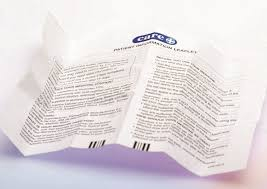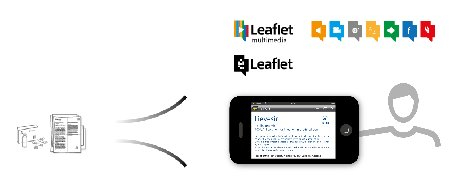With most of the EU stakeholders now looking at the definition of an ePI (electronic product information) for human drugs and its implementation in the form of an eLeaflet, it seems like a natural step forward to start thinking of completely removing the paper document in most of the medicinal packages.

While many parties would welcome such a brave innovation towards the fully digital age, there are a number of obstacles, legal and not, preventing the paper instructions to be removed altogether.
First of all it is worthwhile to clarify that the presence and format of the paper instructions are heavily regulated in most countries and so is the actual content. The requirements vary by country, type of market authorization and product class.
For example in the EU medical devices used primarily by HCPs can eliminate the costs of paper-based product instructions as long as a digital alternative is provided and a paper copy is available upon request, the same holds for products where the required regulatory information can be printed on the outer packaging, in this case the presence of a paper leaflet is not required by law.
On the other side of the spectrum we have homeopathic products that in some countries (for example in Italy until very recently) by law could not have any instructions in the package, the rationale being that personalized therapies would be provided by the prescribing doctor.
Prescription medicines for exclusive hospital use fall yet into another category and so do OTC products and supplements; when on top on this we consider the multi-lingual requirements in some countries or regions we quickly realize how things can get fairly complicated and entangled in global, local and product specific regulatory requirements.
The latest report published in January 2020 by EMA, HMA and The European Commission titled: "Electronic product information for human medicines in the EU: key principles" clarifies that the ePi solution (eLeaflet) would, at least initially, complement existing paper leaflets and does not mandate for the latter to be removed nor sets a time-frame for such a removal.
Complementing the paper package leaflet
Statement
ePI will not supersede or negate the requirement of the pharmaceutical legislation (Article 58 of Directive 2001/83/EC 1 ) to include a PL in the packaging of all medicines or directly convey all information required (by Articles 59 and 62 of the Directive) on the outer or immediate packaging. Since the current legislation does not require the use of an electronic version of PI, the use of ePI will not constitute a new legal obligation.
Rationale
The ePI is intended to expand the formats in which PL is available and not to remove or substitute the currently available paper format. PLs are a valuable tool presented directly in the medicines package and therefore provided to all patients/consumers when they open their medicine. The paper PL is particularly important for patients / consumers with low digital literacy (low ability to use digital devices effectively) or limited internet access.
Implication
Generation of ePI does not involve any change to the content of the PI. ePI generation will be performed in addition to the current inclusion of the PL in the medicine package. Though not legally mandatory, the use of ePI will be a recommended digital source of information and EMA, HMA and NCAs shall commit to implementation. The paper PL should include a statement directing to the ePI as the most up-to-date version of the PL. This statement (based on updated QRD [Working Group on Quality Review of Documents] product information templates) could be added to the PL as part of the next regulatory procedure affecting the PI.
What can be done today
Despite a quickly changing regulatory scenario there are paper-saving actions that can be implemented today while retaining full compliance to existing legal requirements. In most cases a paper format and content review coupled with the implementation of the eLeaflet can achieve important savings in direct materials alone with the added bonus of simplifying the manufacturing process, streamlining materials provisioning, improving printing efficiency, etc..

Current ePI implementations: the eLeaflet
While at present, in most countries, the paper leaflet cannot be removed, at least for prescription products, it is still possible to reduce the size and information currently on the paper leaflets (in full compliance with existing legislative requirements). The benefits are clear: from one side big savings in terms of materials and process complexity, from the other the implementation of a cost effective digital solution that can improve the safe use of medicinal products.
More information about the eLeaflet solution from myHealthbox is available on the eLeaflet website